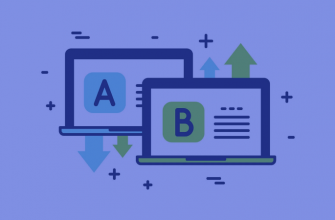The two most common ways to redirect a webpage or an entire website are with the 301 and 302 response codes.
A choice between these may depend on what you want from Google – whether it’s that all pages will be considered as canonicals in their search results, for example if someone moves around within your site then each new location should appear under its own URL rather than having everything linked together by just one main entry point (this also applies when users click through links); alternatively maybe only some internal links need updating so they point at newer versions of old content instead while retaining compatibility across
What is a 301 Redirect?
The 301 is an HTTP status code that tells the browser to redirect you from one URL to another. This means all users who request an old page will be automatically sent towards new content on your site, and it also passes ranking power over with them so people can’t just go back if they were linked too before!
What is a 302 Redirect?
The Hypertext Transfer Protocol (HTTP) status code302 Found indicates that the resource requested has been temporarily moved to URL given by Location header. A browser redirects you here but search engine’s links don’t update their information about this site- in SEO speak called “link juice” isn’t sent along with new location either because specification says so however user agents sometimes still implement bugs like those found out there which means it is recommended not set redirection only on GET/HEAD methods and use 307 Temporary Redirect instead since method change should be explicitly prohibited when performing them
When to use a 301 Redirect?
301 redirects are a great way to make sure your old URLs no longer point at pages that exist on the website. They can also be really valuable when rebuilding sites because you’ll want all of those dynamic portions tidied up into newer, cleaner versions with more visibility for search engines – this includes any non-Working URL addresses found within those older pages! Redirecting them ensures there won’t ever again be duplicate content problems caused by having multiple blogs written about one subject which points back here instead; we aggregate everything into our super blog post now
When Should a 302 Redirect Be Used?
A 302 redirect is a server response code that indicates the resource you are trying to access has been moved temporarily. This is in contrast to a 301 redirect, which indicates the resource has been moved permanently. The main difference between the two is that a 301 redirect will pass on seo benefits, whereas a 302 redirect will not. As a result, if you are making a change to your website that is only temporary, you should use a 302 redirect. However, if the change is permanent, you should use a 301 redirect. Keep in mind that these are general guidelines – there may be other factors to consider when choosing which type of redirect to use. Ultimately, it is best to consult with a seo professional to ensure you are using the most effective redirect for your situation.
How Do 301 and 302 Redirects Impact Your SEO?
A 301 redirect is a permanent redirect from one URL to another. When you use a 301, Google removes the old page from their index and most value (link equity) from that page is transferred to the new one.
With that said, it’s important to note that anytime you move a page from one URL to another, it will take search engines some time to notice the change – and therefore for you to see any potential impact/change in rankings. In general, this time period is relatively short.
When used correctly, a 302 redirect will not hurt your SEO efforts. When you choose this type of redirect, the original page remains indexed in Google and no value (link equity) is transferred to the new URL because Google knows this is just temporary.
A 301 redirect is a server response code that tells a web browser that a page has been moved to a new location. A 302 redirect, on the other hand, is a code that indicates that the page has been temporarily moved. While both codes serve the purpose of directing users to a new page, they differ in how they handle search engine optimization (SEO). A 301 redirect will preserve the SEO value of the old page, while a 302 redirect will not. As a result, it is generally recommended that 301 redirects be used for permanently moved pages, and 302 redirects be used for temporarily moved pages. However, there are exceptions to this rule, and it is ultimately up to the website owner to decide which type of redirect best suits their needs.








